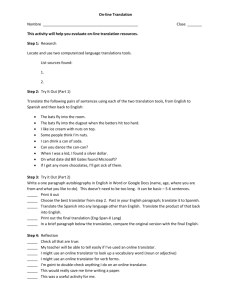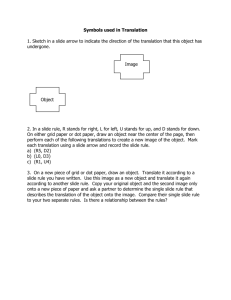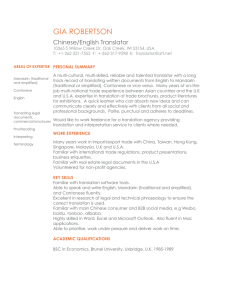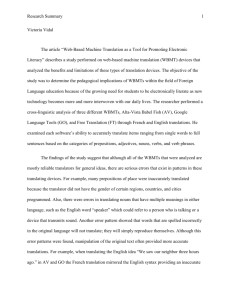Definitions of translation terminology
advertisement
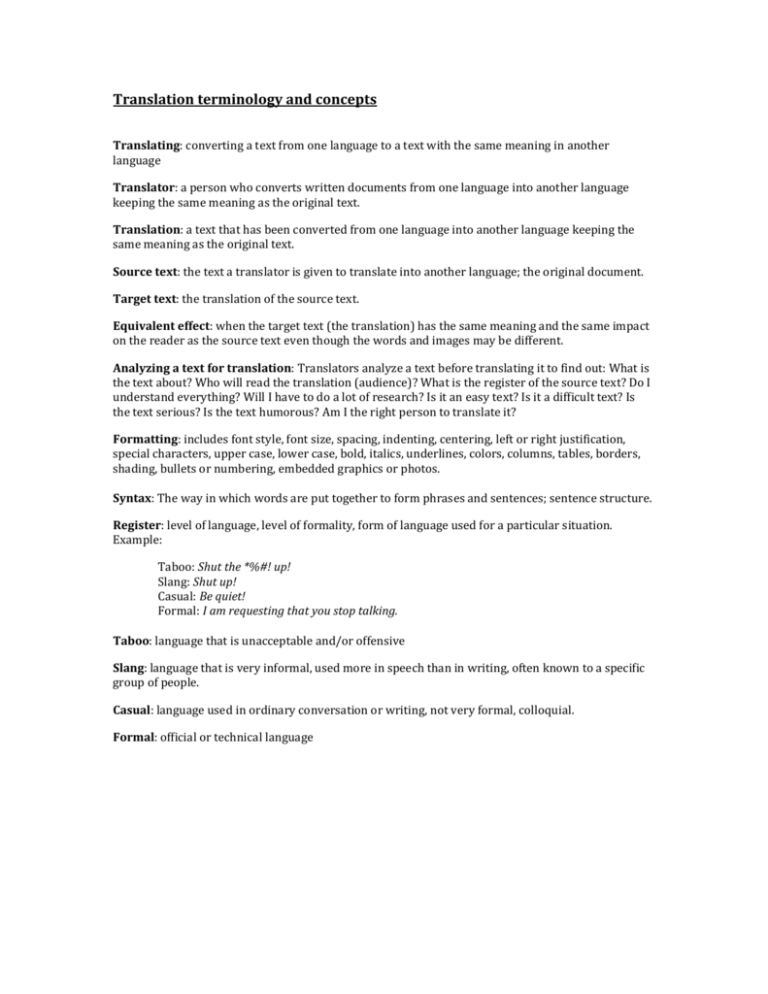
Translation terminology and concepts Translating: converting a text from one language to a text with the same meaning in another language Translator: a person who converts written documents from one language into another language keeping the same meaning as the original text. Translation: a text that has been converted from one language into another language keeping the same meaning as the original text. Source text: the text a translator is given to translate into another language; the original document. Target text: the translation of the source text. Equivalent effect: when the target text (the translation) has the same meaning and the same impact on the reader as the source text even though the words and images may be different. Analyzing a text for translation: Translators analyze a text before translating it to find out: What is the text about? Who will read the translation (audience)? What is the register of the source text? Do I understand everything? Will I have to do a lot of research? Is it an easy text? Is it a difficult text? Is the text serious? Is the text humorous? Am I the right person to translate it? Formatting: includes font style, font size, spacing, indenting, centering, left or right justification, special characters, upper case, lower case, bold, italics, underlines, colors, columns, tables, borders, shading, bullets or numbering, embedded graphics or photos. Syntax: The way in which words are put together to form phrases and sentences; sentence structure. Register: level of language, level of formality, form of language used for a particular situation. Example: Taboo: Shut the *%#! up! Slang: Shut up! Casual: Be quiet! Formal: I am requesting that you stop talking. Taboo: language that is unacceptable and/or offensive Slang: language that is very informal, used more in speech than in writing, often known to a specific group of people. Casual: language used in ordinary conversation or writing, not very formal, colloquial. Formal: official or technical language


